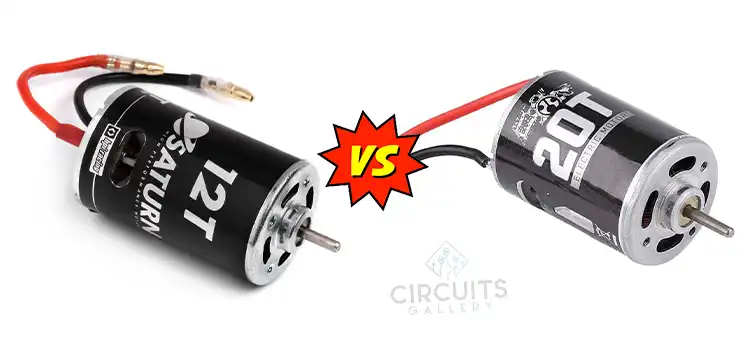A Comparison Guide Of 12 Turn And 20 Turn Motor
When it comes to choosing a motor for your project or application, one of the crucial factors to consider is the number of turns. In this comparison guide, we’ll delve into the differences between 12 turn and 20 turn motors. Understanding these distinctions can help you make an informed decision and ensure your motor meets the specific requirements of your project.

Turn Mechanisms in Motors
The term “turns” refers to the number of wire loops in the motor’s coil. A motor with more turns generally has a higher resistance and is suited for different applications compared to a motor with fewer turns.

Figure: 12 and 20 turn motor.
Advantages of 12 Turn Motors
Efficiency: 12-turn motors are known for their high efficiency, making them ideal for applications that require a balance between power and speed.
Compact Size: These motors are often more compact, which is advantageous when space is limited.
Lower Heat Generation: 12 turn motors tend to generate less heat, enhancing their reliability and longevity.
Disadvantages of 12 Turn Motors
Limited Torque: They may have lower torque compared to motors with more turns, which can limit their use in certain high-torque applications.
Limited Speed Range: 12 turn motors may not provide the same speed range as motors with a higher turn count.
Advantages of 20 Turn Motors
High Torque: 20 turn motors are known for their higher torque output, making them suitable for applications that require substantial power.
Precise Control: They offer more precise control over speed and position due to their higher turn count.
Durability: 20 turn motors are often more durable and can handle heavy loads with ease.
Disadvantages of 20 Turn Motors
Larger Size: These motors are generally larger, which can be a disadvantage in applications with limited space.
Higher Heat Generation: 20 turn motors may produce more heat due to the higher resistance in the coil.
Applications of 12 and 20 turn motors
Let’s see some of the applications of both 12 and 20 turn motors.
12 Turn Motor Application
12 turn motors are commonly used in:
- RC cars and drones
- Small appliances
- Robotics
- Precision instruments
- Applications of 20 Turn Motors
20 Turn Motor Application
20 turn motors are well-suited for:
- Industrial machinery
- Heavy-duty automation
- Large-scale robotics
- High-torque applications
Choosing the Right Motor for Your Needs
Selecting between a 12 turn and a 20 turn motor depends on the specific requirements of your project. Consider factors such as size, torque, speed, and heat generation. Always consult with experts in the field to ensure you make the right choice for your application.
FAQs
1. Which motor is more energy-efficient, 12 turn or 20 turn?
Both motors can be energy-efficient, depending on the application and usage.
2. Can I use a 20 turn motor in a small-scale robotics project?
It’s possible, but you may need to consider size constraints and power requirements.
3. Are there any alternatives to 12 turn and 20 turn motors?
Yes, there are various other motor types with different turn counts, each designed for specific purposes.
Conclusion
The number of turns plays a pivotal role in determining the motor’s performance characteristics. Whether you opt for a 12 turn or a 20 turn motor, understanding their advantages and disadvantages is crucial for a successful project.
Subscribe to our newsletter
& plug into
the world of circuits